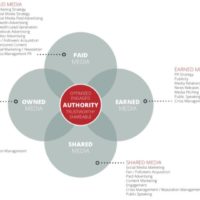
Written by Nikki Richard – Creator of nikkirichard.com and Marketing Consultant
Over the past few years, we’ve witnessed the balance of power shift from traditional marketing to online marketing.
Of course, it was never a matter of if, but when this was going to happen.
Your business should be making an investment in online marketing – not only in terms of the dollars you spend, but also in the work you do to ensure you’re up-to-date with the ever-evolving marketing trends.
Here’s a basic 4-step guide on how to get started online!
STEP 1 – BUILD A MEMORABLE WEBSITE
A great website is always the first step to making your company’s presence felt online. It’s supposed to be the hub where people learn more about your brand, consume your content, and make purchases.
When laying out your new site, there are few key areas where you need to deliver:
- Domain – The name and URL should be clear, concise (short tail vs. long tail), and memorable.
- Design – Make sure you have fast hosting, an attractive user-friendly desktop and mobile layout, and solid technical SEO.
- Content – This has become an essential for small businesses. You should be producing consistent content that is relevant, engaging, and useful.
STEP 2 – USE SOCIAL MEDIA TO ENGAGE YOUR TARGET AUDIENCE
It’s no secret that social media is the latest and greatest frontier in online marketing.
Where else can your company engage millions upon millions of active users in a single space?
But social media is no longer just an opportunity. It’s also a responsibility.
Consumers use social media to voice their concerns, offer feedback, and engage with your brand. So, for the sake of your business’s reputation, you should be active on social media and using it to its fullest potential.
But not only that – social media also allows you to market your content effectively. There are so many different channels that you can utilize, and this is another reason why content repurposing has become so important today.
Your business’s content and message should be able to translate into an infographic, a 3-minute video, a blog post, and even a 140-character tweet!
STEP 3 – DESIGN EFFECTIVE DIGITAL MARKETING CAMPAIGNS
Now that you have an eye-catching website and complete social media pages, you have everything you need to start building marketing campaigns in the digital space.
You have so many tools at your disposal. On-page and off-page SEO, pay-per-click advertisement, conversion rate optimization (CRO), Google Ads, and Facebook Ads are all proven elements of online marketing campaigns.
Next, be sure to identify your value propositions and put them on display. Use these to tailor your next campaign.
Are you looking to increase sales? A well-executed funnel campaign can help you develop and nurture leads, and convert prospects into customers.
Are you looking to build your email or newsletter lists? Design a free product that has significant perceived value, assuring a consumer that offering an email address is a reasonable exchange.
STEP 4 – SEND EMAIL CAMPAIGNS
Email’s not dead. Not yet!
Consistency is key here. Don’t feel as though you have to always hit a home run with your emails. Over time, you want to increase brand awareness, nurture your leads, and prime your prospects for taking the next step – becoming paying customers!
Always view your emails as content, because if you hadn’t already noticed from steps one, two, and three, content is what drives your brand’s message.
And at its core, that’s really the secret to online marketing – creating killer content that will make your brand’s presence felt in the digital world!




